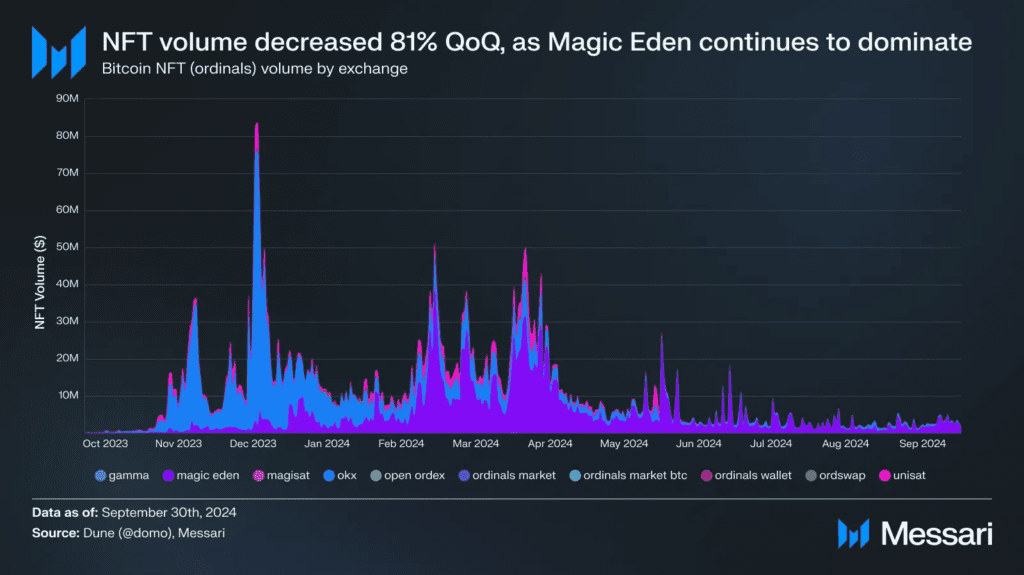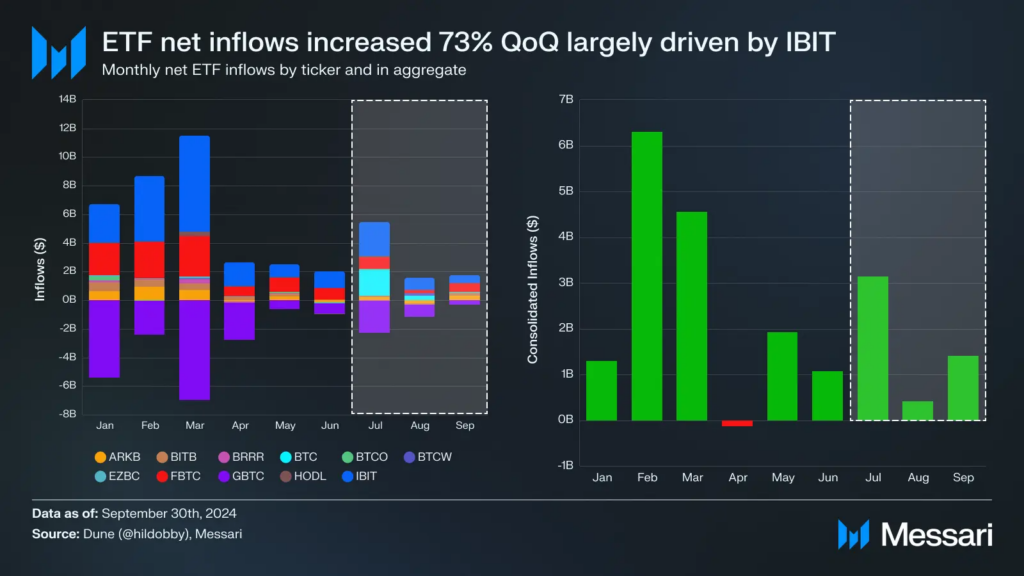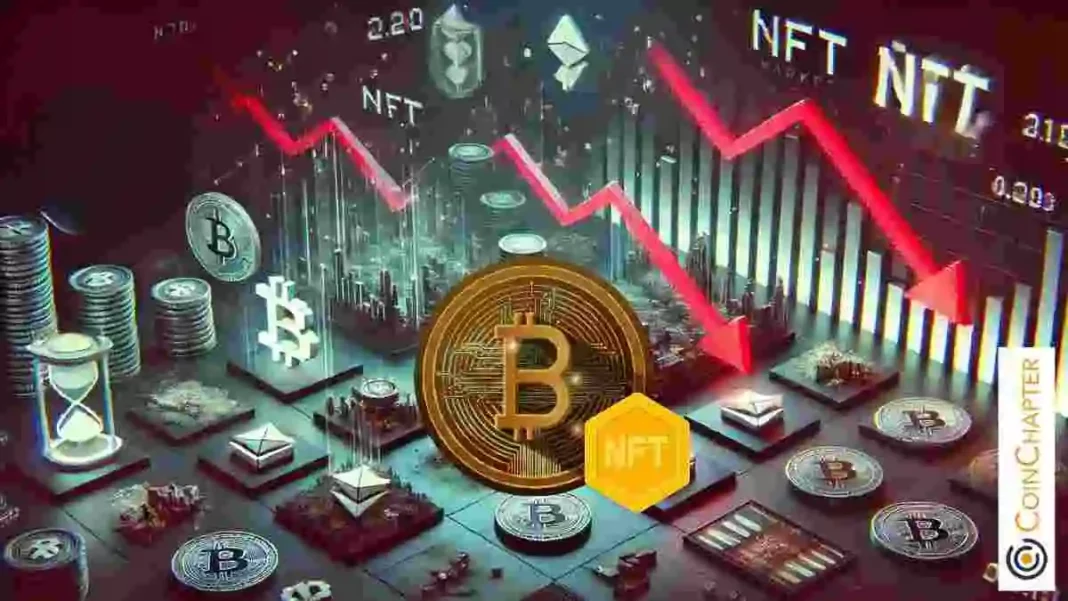In early 2024, Bitcoin’s hopeful NFT market boom was initially fueled by excitement and heavy trading. It saw a sharp rise, with trading volume peaking at $407.8 million in May 2024. However, as interest cooled, volume dropped massively, sitting at $144.56 million at the time of writing. Ordinals and Runes—Bitcoin’s answer to Ethereum’s NFTs—were once highly sought after, relying on “inscriptions” that allow unique data to be embedded on Bitcoin’s blockchain. By Q3, however, daily inscriptions dropped by 34%, falling to around 26,000, reflecting a broader pullback in speculative interest.

However, a few collections, like NodeMonkes and Bitcoin Puppets, have stuck around, showing that some fans still have a soft spot for Bitcoin-based digital stuff. Casey Rodarmor’s “Runes” tokens had their moment, bumping out the older BRC-20 tokens. But soon, people shifted back to using plain old Bitcoin, leaving the shiny new Runes and other NFTs less popular. It seems that Bitcoin’s big NFT craze might be fading as folks return to the basics.

ETFs and New Protocols Shift Market Focus
While Bitcoin NFTs took a backseat, other areas within the ecosystem gained the spotlight. Bitcoin ETFs bounced back in Q3, pulling in $5 billion, up 73% from the previous quarter. Blackrock’s IBIT led the way with a massive $3.7 billion in inflows, confirming that sometimes the best magic trick is just cold, hard Bitcoin. By the end of the quarter, Bitcoin ETFs were nearly at the 1 million BTC mark, attracting steady institutional attention as NFTs took a coffee break.

Meanwhile, staking protocols also became a key attraction. Babylon’s staking protocol launched with a bang in August, hitting its cap of 1,000 BTC within minutes. This surge contributed to a 20% increase in Bitcoin’s total value locked (TVL), with layers like Core seeing a 4.6x rise in TVL.
Wider Economic Pressures Dampen Bitcoin NFT Appetite
Economic pressures have cooled Bitcoin’s NFT market. The initial Bitcoin NFT boom rode on pandemic-era uncertainty, with inflation, higher interest rates, and tighter monetary policies rising in response. As markets stabilize, investors are less drawn to high-risk assets like NFTs.
The broader decline in cryptocurrencies has hit the NFT market, reducing both purchasing power and enthusiasm. Recent shocks, including Terra Luna and FTX’s collapses, have further shaken confidence. Bitcoin itself saw sharp swings, spiking near $70,000 before dropping below $50,000, weighed down by the yen carry trade unwind.
Entering Q4, attention has shifted toward more stable uses like staking and programmable layers. Bitcoin’s focus appears to be evolving, with NFTs now playing a quieter role as long-term applications gain ground.

As of the time of writing, Bitcoin (BTC) trades at $68,486, reflecting a 2.07% increase over the past day.
The post What Happened to That Bitcoin NFT Boom? appeared first on CoinChapter.


